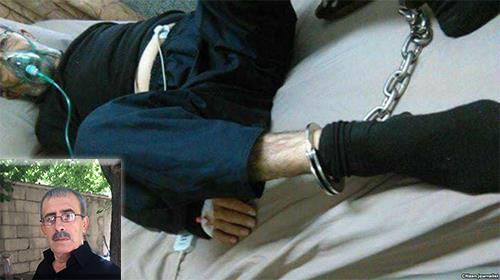A look at Iranian teachers’ protests
Protests by the teachers of Isfahan
In the final week of December, the teachers of Isfahan held demonstrations in front of the offices of the education ministry in protest to their deteriorating working conditions.
In the second day of the demonstrations, Iranian security forces attacked the teachers with batons and pepper spray to disperse them and to prevent the protests from continuing. The teachers were demanding the release of their imprisoned colleagues and improvements to their working conditions, including an increase in wages.
Like many other segments of the country’s population, Iran’s teachers are faced with increasingly difficult economic conditions which stem from the corrupt policies adopted by the ruling regime. After four decades of unfulfilled promises by Iranian officials, the teachers see demonstrations and strikes as the only way they can achieve their goals. As a result, the regime’s repressive measures are becoming increasingly ineffective in forcing the teachers to back down from their most basic demands.
The protests took place despite widespread efforts by the Iranian regime’s security forces to cause fear and panic among the teachers and dissuade them from holding their demonstrations. Security officials had declared that they would arrest and prosecute anyone who took part in the protests. Security forces lined up in front of the education ministry offices, where the teachers had appointed for their rally.
But the teachers showed up nonetheless. And while security forces brutally cracked down on their gathering, the teachers continued to hold their lines and shout their slogans.
According to reports, during the protests, security forces arrested 40-50 teachers and took them to an unknown location.
In the past months, teachers have gone on strike on two occasions in protest to their conditions. While the latest demonstrations are in Isfahan, similar protests have taken place in numerous other cities including Sari, Kermanshah, Gharveh, Divan Dareh, Shiraz, Mamasani, Kazerun, Marivan, Tabriz and Khoramabad.
Some of these nationwide protests include the following:
- In May, Iranian teachers held strikes in 34 cities
- In October, a second round of strikes by Iranian teachers, which lasted for two days, expanded to 103 cities
- In November, the teachers held another strike, with participants in all Iranian provinces
- In December, teachers and students in Hamedan and Kermanshah held demonstrations
- Shortly after, teachers in Isfahan and Yazd held protests. A few days later, teachers in Tabriz held demonstrations in spite of the freezing cold.
As the trend shows, protests by Iranian teachers are becoming more frequent, organized and expansive. When viewed in the context of other ongoing protests across Iran, the courage and determination of Iranian teachers are fueling and assisting other communities that are protesting for their most basic rights, such as workers, truck drivers, and merchants.
Overall, as the nationwide uprisings that began last year continue, the people of Iran are developing a spirit of solidarity, and with the help of organized resistance units, they’re inching toward achieving their ultimate demand which is to topple the dictatorship ruling their country and replace it with a democratic state.




Comments
Post a Comment